I have written an implementation of Bresenham's circle drawing algorithm. This algorithms takes advantage of the highly symmetrical properties of a circle (it only computes points from the 1st octant and draws the other points by taking advantage of symmetry). Therefore I was expecting it to be very fast. The Graphics programming black book, chapter #35 was titled "Bresenham is fast, and fast is good", and though it was about the line drawing algorithm, I could reasonably expect the circle drawing algorithm to also be fast (since the principle is the same).
Here is my java, swing implementation
public static void drawBresenhamsCircle(int r, double width, double height, Graphics g) {
int x,y,d;
y = r;
x = 0;
drawPoint(x, y, width, height,g);
d = (3-2*(int)r);
while (x <= y) {
if (d <= 0) {
d = d + (4*x + 6);
} else {
d = d + 4*(x-y) + 10;
y--;
}
x++;
drawPoint(x, y, width, height,g);
drawPoint(-x, y, width, height,g);
drawPoint(x, -y, width, height,g);
drawPoint(-x, -y, width, height,g);
drawPoint(y, x, width, height,g);
drawPoint(-y, x, width, height,g);
drawPoint(y, -x, width, height,g);
drawPoint(-y, -x, width, height,g);
}
}
This method uses the following drawPointmethod:
public static void drawPoint(double x, double y,double width,double height, Graphics g) {
double nativeX = getNativeX(x, width);
double nativeY = getNativeY(y, height);
g.fillRect((int)nativeX, (int)nativeY, 1, 1);
}
The two methods getNativeX and getNativeY are used to switch coordinates from originating in the upper left corner of the screen to a system that has it origin in the center of the panel with a more classic axis orientation.
public static double getNativeX(double newX, double width) {
return newX + (width/2);
}
public static double getNativeY(double newY, double height) {
return (height/2) - newY;
}
I have also created an implementation of a circle drawing algorithm based on trigonometrical formulaes (x=R*Math.cos(angle)and y= R*Math.sin(angle)) and a third implementation using a call to the standard drawArc method (available on the Graphics object). These additional implementations are for the sole purpose of comparing Bresenham's algorithm to them.
I then created methods to draw a bunch of circles in order to be able to get good measures of the spent time. Here is the method I use to draw a bunch of circles using Bresenham's algorithm
public static void drawABunchOfBresenhamsCircles(int numOfCircles, double width, double height, Graphics g) {
double r = 5;
double step = (300.0-5.0)/numOfCircles;
for (int i = 1; i <= numOfCircles; i++) {
drawBresenhamsCircle((int)r, width, height, g);
r += step;
}
}
Finally I override the paint method of the JPanel I am using, to draw the bunch of circles and to measure the time it took each type to draw. Here is the paint method:
public void paint(Graphics g) {
Graphics2D g2D = (Graphics2D)g;
g2D.setColor(Color.RED);
long trigoStartTime = System.currentTimeMillis();
drawABunchOfTrigonometricalCircles(1000, this.getWidth(), this.getHeight(), g);
long trigoEndTime = System.currentTimeMillis();
long trigoDelta = trigoEndTime - trigoStartTime;
g2D.setColor(Color.BLUE);
long bresenHamsStartTime = System.currentTimeMillis();
drawABunchOfBresenhamsCircles(1000, this.getWidth(), this.getHeight(), g);
long bresenHamsEndTime = System.currentTimeMillis();
long bresenDelta = bresenHamsEndTime - bresenHamsStartTime;
g2D.setColor(Color.GREEN);
long standardStarTime = System.currentTimeMillis();
drawABunchOfStandardCircles(1000, this.getWidth(), this.getHeight(),g);
long standardEndTime = System.currentTimeMillis();
long standardDelta = standardEndTime - standardStarTime;
System.out.println("Trigo : " + trigoDelta + " milliseconds");
System.out.println("Bresenham :" + bresenDelta + " milliseconds");
System.out.println("Standard :" + standardDelta + " milliseconds");
}
Here is the kind of rendering it would generate (drawing 1000 circles of each type)

Unfortunately my Bresenham's implementation is very slow. I took many comparatives measures, and the Bresenham's implementation is not only slower than the Graphics.drawArcbut also slower than the trigonometrical approach. Take a look at the following measures for a various number of circles drawn.
What part of my implementation is more time-consuming? Is there any workaround I could use to improve it? Thanks for helping.

[EDITION]: as requested by @higuaro, here is my trigonometrical algorithm for drawing a circle
public static void drawTrigonometricalCircle (double r, double width, double height, Graphics g) {
double x0 = 0;
double y0 = 0;
boolean isStart = true;
for (double angle = 0; angle <= 2*Math.PI; angle = angle + Math.PI/36) {
double x = r * Math.cos(angle);
double y = r * Math.sin(angle);
drawPoint((double)x, y, width, height, g);
if (!isStart) {
drawLine(x0, y0, x, y, width, height, g);
}
isStart = false;
x0 = x;
y0 = y;
}
}
And the method used to draw a bunch of trigonometrical circles
public static void drawABunchOfTrigonometricalCircles(int numOfCircles, double width, double height, Graphics g) {
double r = 5;
double step = (300.0-5.0)/numOfCircles;
for (int i = 1; i <= numOfCircles; i++) {
drawTrigonometricalCircle(r, width, height, g);
r += step;
}
}